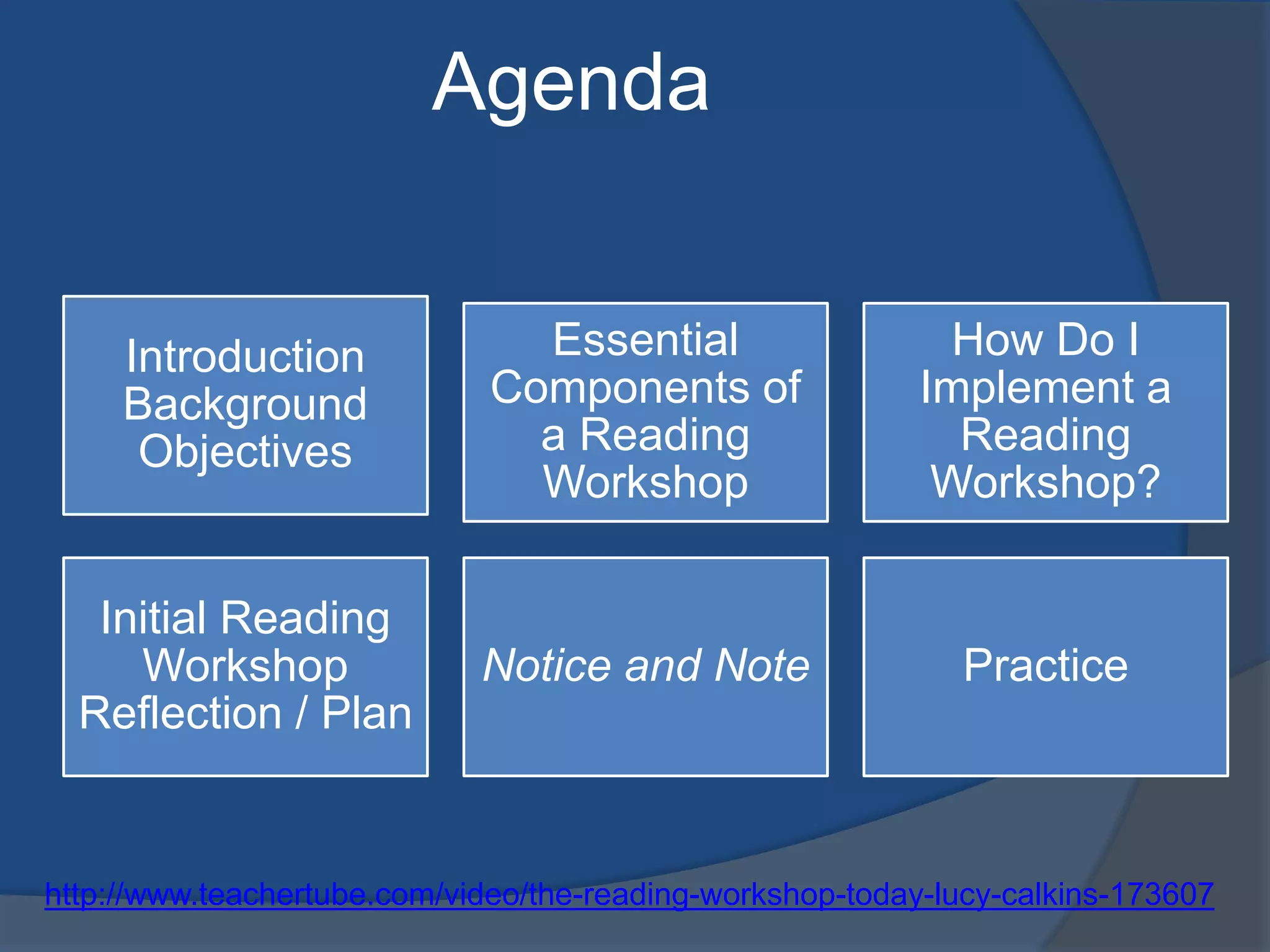The document provides an agenda and materials for a workshop on implementing reading workshops in the classroom. It includes background information on reading workshops, the essential components which are a teaching portion, independent reading time, and shared learning time. It also discusses selecting appropriate texts for students and assessing reading comprehension. The goal is to help teachers understand how to structure an effective reading workshop to increase student motivation and engagement.








































